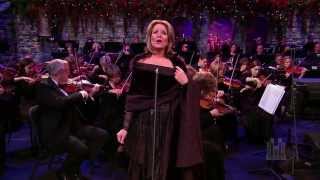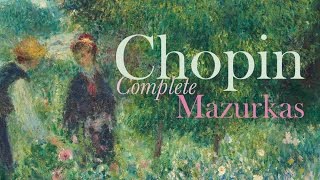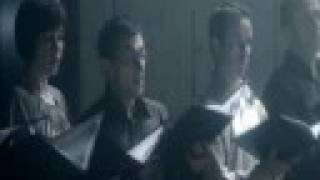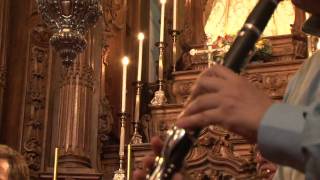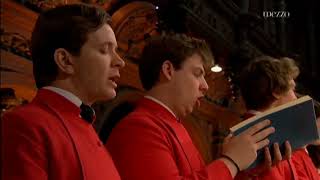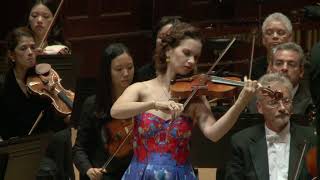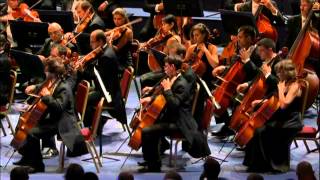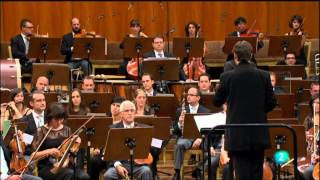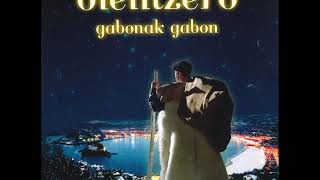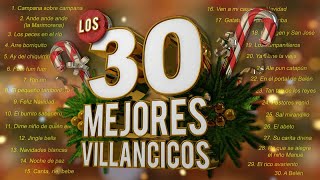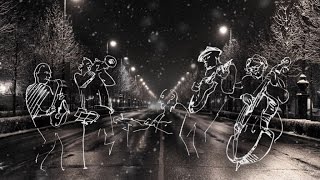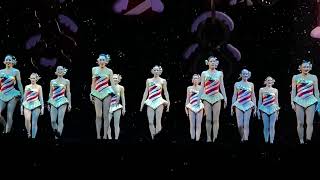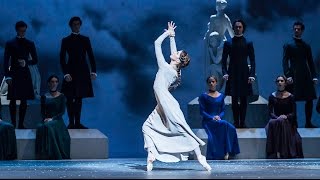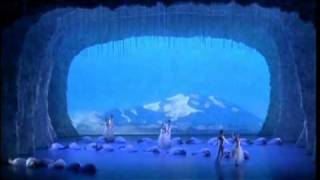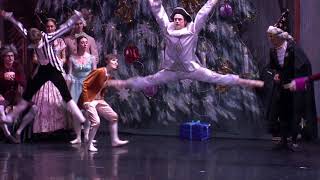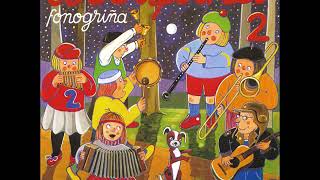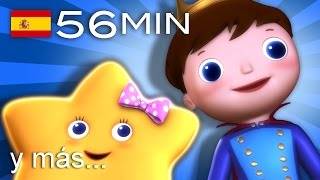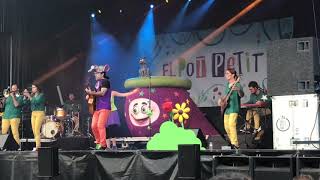Recommended music videos for initiation to classical music
Renée Fleming (1959) is an American operatic lyric soprano, considered one of the best interpreters of Mozart and Richard Strauss of her generation. She is also a notable interpreter of the French repertoire and works in Slavic languages, having also incorporated operas by Händel, Verdi, Donizetti and Rossini into her repertoire. The range of her voice has been compared to that of Victoria de los Ángeles, Eleanor Steber and Leontyne Price and according to conductor Georg Solti "In my long life, perhaps only two sopranos have I come across with such a vocal quality, one is Renée , the other It was Renata Tebaldi ." In addition to the operatic repertoire, he interprets contemporary music, musicals and other genres, such as the collection of Christmas songs that we offer today.
The Mormon Tabernacle Choir is an American choir founded on August 22, 1847, twenty-nine days after Mormon pioneers took up residence in the Salt Lake Valley and usually performs accompanied by an organ made up of 11,623 pipes. Prospective choir singers must be members of the LDS Church , be between the ages of 25 and 55 at the start of the choir service, and live within 100 miles (160 km) of the Temple. The choir is one of the most famous in the world, having performed at the inaugurations of Presidents Lyndon B. Johnson, Richard Nixon, Ronald Reagan, George H. W. Bush, George W. Bush, and Donald Trump . Its members cannot remain more than 20 years in this choir, they do not receive any remuneration and they consider it a great honor to belong to the choir.
Frédéric Chopin (1810-1849) was a virtuoso Polish pianist and composer; as a pianist, he is considered one of the most important in history and as a composer, one of the benchmarks of Romanticism . He was born into a vocationally musical family; his mother played the piano and his father the violin and flute; His first teacher was a sister of his with whom he liked to play pieces with four hands. At the age of eight he gave his first public concert in the palace of the Radziwill family in Warsaw . Chopin 's work focuses exclusively on the piano, solo or concertante, with which he embarked on a solo career of technical perfection, expressive splendor and deepening in the rubato until he became the musical benchmark for that instrument.
The mazurka or mazurka was originally a ballroom dance of the Polish royal court and nobility, which over time became a dance of the popular class. Written in ternary time signature (3/4, 3/8), it is characterized by its accents on the 2nd and 3rd beats, in contrast to the waltz . It became known throughout Europe along with the polka (of a similar structure) during the second half of the 19th century and became the fashionable dance in the great European capitals during this century. It is danced in pairs, and it is a lively and gallant dance.
Frédéric Chopin was the main precursor of this stylized musical form in classical and concert music, whose album we offer today by the Russian pianist Rem Urasin , interpreter of all Chopin 's works.
Antonio Vivaldi (1678-1741) was an Italian priest, violinist, and composer known as the red priest (“il prete rosso”). He was born in Venice and as a child learned to play the violin from his father; at the age of 15 he entered the Seminary and once ordained a priest, he could barely attend to his religious obligations due to his health problems; so he was appointed violin teacher in an orphanage where he taught theory and instrument classes. At the age of 40, he was appointed Chapel Master in Mantua where he wrote his famous Four Seasons . From there he moved to Milan , then to Rome ; later, again to Venice and finally, to Vienna where he would die. Throughout his life he composed almost 800 works, of which half were concerts, 40 operas, 60 religious works and numerous sonatas.
The Four Seasons , Vivaldi 's best-known work, is a group of four concertos for violin and orchestra (each concerto is dedicated to a season: Spring, Summer, Autumn, and Winter). Although unusually for the time, Vivaldi published the concertos with accompanying poems describing what he wanted to represent in relation to each of the seasons. It provides one of the earliest and most detailed examples of what would later be called programmatic or descriptive music, music with a narrative element.
Today we attend the third movement of the fourth concert, Winter , which, like the rest of the concerts, is divided into three movements (Fast-Slow-Fast) in the new version that Accentus offers us today, a French chamber choir founded in 1991 The choir is made up of 32 singers, all professionals, and its repertoire ranges from Baroque works to contemporary works. Today it is run by its founder and current director, Laurence Equilbey .
Heitor Villa-Lobos (1887-1959) was a Brazilian composer and conductor, whose music was influenced by both Brazilian folk music and European classical music. He received some musical instruction from his father and before 1899, the year of his father's death, he had already begun to dedicate himself to music as a professional. He acted as a café musician playing the cello, although he was also an occasional guitar, clarinet and piano player. As a composer, he was notoriously prolific with a legacy of works for guitar, works for piano, 17 string quartets, 9 Bachianas brasileiras, 15 Choros for different musical formations, 12 symphonies, 18 concertante works, 4 operas, 2 film scores and numerous works of different kinds that include various ballet scores.
The Bachianas Brasileiras are a set of nine works written for different formations with a formal memory of Bach . It should be noted that the suffix "-ana" is often used in the titles of musical works, as a way for a composer to pay homage to a previous composer or famous performer.
O Trenzinho do Caipira is a composition for wind quintet (flute, oboe, clarinet, bassoon and horn) by Heitor Villa-Lobos and an integral part of the piece Bachianas Brasileiras nº 2 . The work is characterized by imitating the movement of a locomotive with the instruments of the orchestra. Today it is offered to us by the Villa-Lobos Quintet .
Recommended classical music videos
Georg Friedrich Händel ( 1685-1759) was born in Halle , Germany; nationalized English, he is one of the top figures in the History of Music and, of course, of the Baroque. Of his abundant musical production, we must highlight the Oratorio El Mesías , one of the masterpieces of History . As a child he began to receive harmony and counterpoint classes from Friedrich Zachow , an organist from Halle , with whom he also learned to play the oboe, violin and organ. At the age of 18 he moved to Hamburg where he wrote his first two operas. After three years he traveled to Florence and then to Rome . In 1710 he returned to Germany and from there to London where he settled for life. Despite the total silence with which he protected his privacy, his homosexuality seems clear. He died at the age of 74 at his home.
The Messiah is an oratorio in English composed by Georg Friedrich Hände l in 1741, with a biblical text collected by Charles Jennens . Its premiere was in Dublin on April 13, 1742 and was performed almost a year later in London . After a modest initial public reception, the oratorio gained popularity, eventually becoming one of the best-known and most frequently performed choral works in Western music. Handel turned to English oratorio in the 1730s in response to changes in public taste. The Messiah was his sixth work in this genre; while in the other oratorios a marked Italian influence can be recognized, the music of El Mesías is rooted in the old German passions and cantatas.
The three-part structure of the work approximates that of Handel 's three-act operas, with the "parts" subdivided by Jennens into "scenes". Each scene is a collection of individual numbers or "movements" that take the form of recitatives, arias, and choruses. PART I (0´00´´) begins with the symphony/overture, after which the text uses the prophecies of Isaiah and others, and moves on to the annunciation to the shepherds, the only scene taken from the Gospels . In PART II (52'28''), Händel concentrates on the Passion and ends with the chorus « Hallelujah ». In PART III (1H 44'10'') covers the resurrection of the dead and the glorification of Christ in Heaven.
Ludwig van Beethoven (1770-1827) together with Bach and Mozart is part of the trio of giants of Western music. Born in Bonn , his father, of Flemish origin, tried to make a second Mozart of him, though it was a notable failure. Despite this, from the age of nine, the organist Christian Gottlob Neefe captivated him with the study of Bach , whom he would always keep in mind. In 1787 he moved to Vienna with the intention of receiving Mozart classes, but the death of his mother brought him back to Bonn after a few days. And so after five years, he returned to Vienna where he made contact with Haydn and Salieri , making himself known as a composer and pianist with well-known public recognition. However, his profession as a pianist could not be carried out due to the deafness that attacked him the following year until he was totally disabled from said faculty.
Beethoven 's Violin Concerto in D major, Op. 61, written in 1806, is the composer's only concerto for this instrument. It is an important work in the violin repertoire , and is frequently performed and recorded today. There is also an adaptation for piano and orchestra composed by Beethoven himself, classified as Op. 61a. Beethoven wrote the concerto for his colleague Franz Clement , a prominent violinist of the day, who had previously advised him during the composition of his opera Fidelio . The work premiered on December 23, 1806 at Vienna's Theater an der Wien .
The concerto is articulated in three movements. I (0´40´´) ALLEGRO MA NON TROPPO with the structure of the sonata form with its two contrasting themes. II (25´05´ ) LARGHETTO The violin develops a single theme, on which it performs half a dozen variations that many scholars have agreed to define as “decorative”. III (34´25´´) RONDÓ ALLEGRO”. The violin begins directly with a sprightly theme that seems to have been Clement 's own idea. The orchestra plays with it over and over again. The most successful moment is a passage of extremely inspired beauty, in which the violin melody (37'24''), played in G minor, passes from it to the bassoon. After different episodes will come the cadenza . The concert concludes with a coda in which the exposition of Clement 's theme is collected.
( Extracted from Digital music lover )
The Manfredo Symphony in B minor, Op. 58, is a symphony composed by Piotr Ilyich Tchaikovsky between May and September 1885. It is based on the poem Manfredo written by Lord Byron in 1817. Written between the fourth and fifth symphonies, it is the only symphony not numbered by Tchaikovsky . Some say that this was his most brilliant and inspiring work; even the director Arturo Toscanini considered it Tchaikovsk i's best work. On the other hand, there are those who think the opposite; according to music critic David Hurwitz , composer-conductor Leonard Bernstein referred to this symphony as "garbage".
Manfred structure . I (0´02´´) SLOW Gloomy. "Manfred wanders the Alps, tired of the fatal questions of existence, tormented by desperate desires and the memory of past crimes, he suffers cruel spiritual pains... The memory of the lost Astarte, passionately loved, torments his heart." II (15'26'') VIVACE CON SPIRITO "The fairy of the Alps appears to Manfredo in the rainbow created by the spray of a waterfall. III (25'23'') ANDANTE WITH MOTO "Pastoral. An image of the poor, simple and free life of the mountaineers". IV (37´32´´) ALLEGRO CON FUOCO «The underground palace of Ariman. Infernal orgy. Appearance of Manfredo in the middle of the bacchanalia. Evocation and appearance of the shadow of Astarte. He is forgiven. Death of Manfred."
This video is offered by the Orchestra Sinfonica di Milano Giuseppe Verdi under the baton of the Chinese maestro Xian Zhang (1973), the first woman to be chief conductor of the BBC Symphony Orchestra in Wales .
Carmelo Alonso Bernaola (1929-2002) was a Basque composer, music teacher and clarinetist considered one of the greatest exponents of Spanish music in the second half of the 20th century . Throughout his career, he composed more than 300 works including classical music, popular songs such as the Athletic Club Anthem , and numerous soundtracks for film and television. He was a clarinetist in the Madrid Municipal Band , professor of harmony at the Madrid Conservatory and director of the Jesús Guridi Music Conservatory in Vitoria from 1981 to 1991. Among his recognitions, two National Music Awards stand out, the Gold Medal for merit in the Fine Arts and admission to the Music Section of the Royal Academy of Fine Arts of San Fernando.
Symphony number 2 responds to a commission from Radio Nacional de España to celebrate the fiftieth anniversary of Carmelo Bernaola . It should have been a page of maturity and it has turned out to be the work of a master. The three outings to enthusiastic applause from the composer from Otxandiano clearly show that the proposed goal has been achieved: connecting with the general public without resigning from current thought in its radical substance. Four movements (linked by the intervention of a distant string sextet) give us a succession of extraordinarily beautiful images and sound events through a prodigious orchestral imagination and within proportions so precisely calibrated that we receive the sensation that there is no lack of Not a single note is left. (Extracted from an article by Enrique Franco in the Country)
Today's version is offered to us by the RTVE Symphony under the baton of the Levantine maestro Jordi Bernàcer Valdés (Alcoy, November 5, 1976).
Recommended music videos for all tastes
Christmas Music comprises a variety of musical genres that are regularly performed or heard during the Christmas season. The music associated with Christmas can be purely instrumental, or in the case of Christmas carols or songs it can use lyrics whose themes range from the birth of Jesus Christ , passing through the delivery of gifts and joy and cultural figures such as Olentzero or Santa Claus , among other topics. Many songs simply have a winter or seasonal theme, or have been adopted into canon for other reasons. While most pre-1930s Christmas songs were traditionally religious in nature, the Great Depression era of the 1930s brought a number of songs of American origin, most of which made no explicit reference to Christian nature. of the holiday, but to the more secular traditional Western themes and customs associated with Christmas . These included songs aimed at children such as " Santa Claus Is Coming to Town " and " Rudolph the Red-Nosed Reindeer ", as well as sentimental ballad-like songs performed by famous singers of the day, such as " Have Yourself a Merry Little Christmas ". and " White Christmas ", the latter of which remains the best-selling single of all time as of 2018. Christmas music performances at public concerts, churches, malls, city streets, and private gatherings are a integral staple of the holiday season in many cultures around the world. Radio stations often convert to a 24/7 Christmas music format leading up to the holiday, as part of a phenomenon known as "Christmas sneak peek."
Recommended peculiar videos
Radio City Music Hall is a theater, considered the most important in the USA , located in Rockefeller Center in the middle of New York . Inaugurated in 1932, it has 5,931 seats for so many other spectators. Since 1933, the Radio City Christmas show has been replenished regularly every year with five daily performances; show starring mainly the Radio City Rockettes , which is an artistic group of dancers, Santa Claus and other artists. Other Rockettes groups tour and perform across the nation on Christmas days.
The Winter's Tale is a ballet in three acts based on the play of the same name by William Shakespeare ; It is a story of jealousy with moments that are sometimes dramatic and other times joyful; but it ends in a happy ending. Today we will see a scene from the first act starring Lauren Cuthbertson (1984), prima ballerina of The Royal Ballet of London . The music is written by Joby Talbot , (1971) a British composer who has worked on the most diverse genres of music such as a cappella choral works, instrumental music, film and television soundtracks, or ballet music.
David Fang (1986) is a Chinese composer of stage music, film, television and audiovisuals. Born in Shanghai and raised in New York , he began studying violin as a child with his father, a professional musician, and formalized his studies in music and music technology in New York . At the age of 12 he wrote his first orchestral work and from then on he would continue composing music for video games and others. When he was only fourteen years old, he wrote the ballet The Four Seasons of which we present his Winter staged by Shanghai Dance Academy today.
Piotr Tchaikovsky (1840-1893) was a Russian composer who graduated from the Saint Petersburg Conservatory and wrote works of different genres, although he achieved his greatest success with his ballets. In 1859 he obtained a position as a civil servant in the Ministry of Justice, which he would abandon at the age of three to be able to dedicate himself solely to music. His personal life was plagued by continuous crises since the death of his mother and his repressed homosexuality, which forced him into a marriage that only lasted a few months. He wrote more than 150 compositions, including piano works, quartets, suites, symphonies, concertos, chorales, cantatas, operas, and ballets. He died at the age of 53 and is considered one of the greatest composers in history.
The play we are viewing today, Nutcracker , is a fairy tale/ballet usually performed at Christmas parties. The premiere was held at the Mariinsky Theater in Saint Petersburg , but before opening it, it had already formed an orchestral suite with eight of its numbers. The plot is based on a short story by ETA Hoffmann adapted by Alexandre Dumas ; The story takes place in the middle of Christmas in which a magician arrives at Clara 's home with a box of puppets and the Nutcracker doll who is actually a prince. After multiple incidents, it turns out that everything has been a dream of Clara 's.
Recommended music videos for children
Various Wikipedia articles have been used to write these texts.
The texts of Videomusicalis are written in Basque, Spanish and English.





